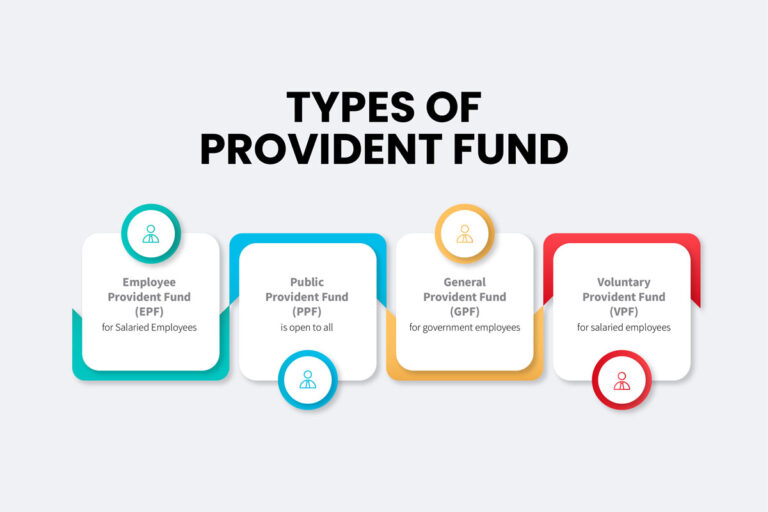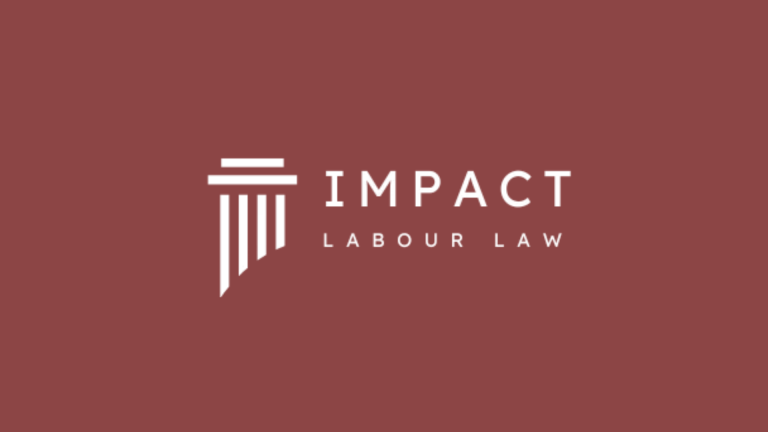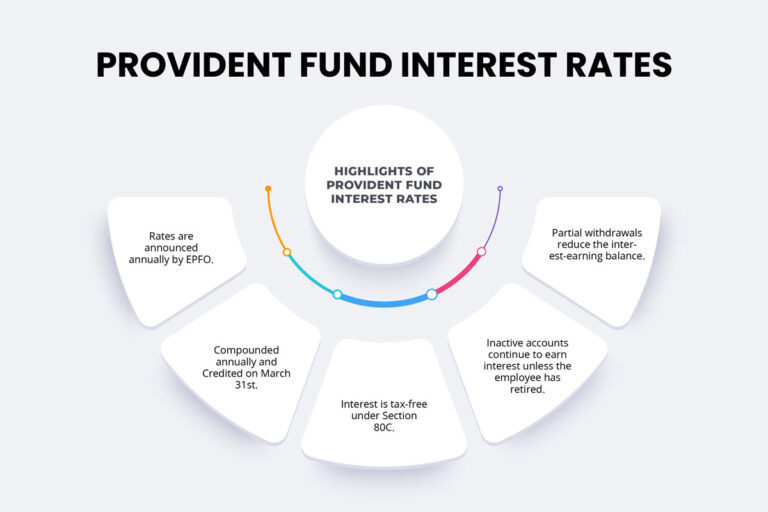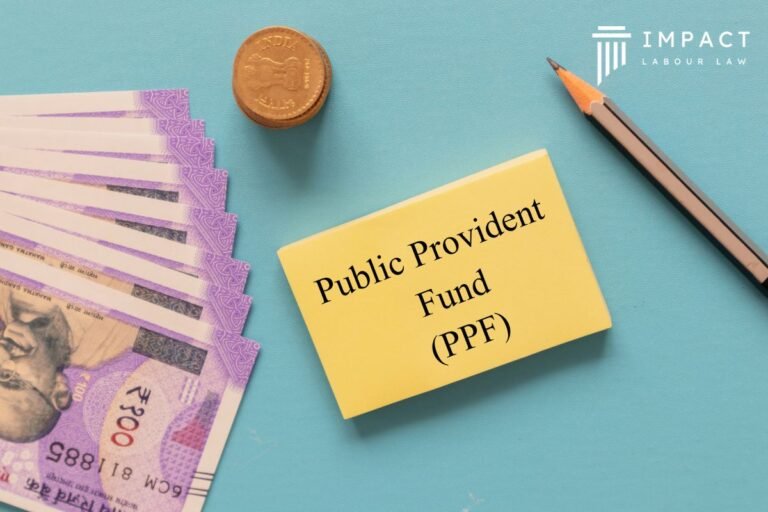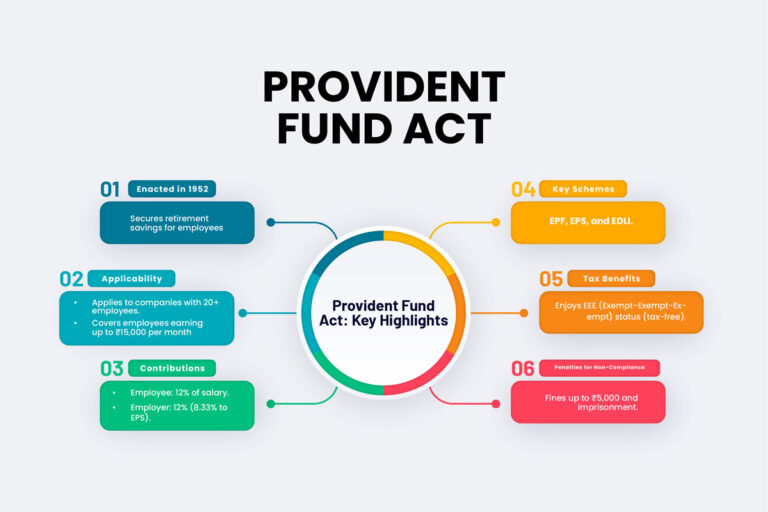If there’s one savings instrument that needs no introduction, it’s the Employee Provident Fund (EPF). We see it each month on our payslips. From the moment you receive your salary, your employer automatically deducts a portion of your salary and directs it into an EPF account—whether you choose to or not.
In this comprehensive guide, we’ll explore everything you need to know about the Provident Fund, from its purpose, benefits, eligibility, taxation, and every aspect of the scheme.
What is a Provident Fund?
Provident Fund is a social security scheme designed for salaried employees in India, managed by the Employees’ Provident Fund Organization (EPFO). The primary purpose of the EPF is to ensure that employees have a sufficient corpus to fall back on after retirement. Besides offering retirement benefits, EPF also serves as a financial cushion in times of need, with provisions for partial withdrawals for medical treatment, home purchases, education, and more.
The EPF scheme is mandatory for employees:
– earning less than Rs. 15,000 per month and
– employed in organisations with more than 20 employees
However, employees earning more than Rs. 15,000 per month can also opt for EPF voluntarily.
How is PF regulated and managed?
The Employees’ Provident Funds and Miscellaneous Provisions Act, 1952, is the key law behind PF in India. The Act is also commonly known as The Provident Fund Act and is applicable pan-India (except Jammu & Kashmir). The Employees’ Provident Fund Organisation (EPFO), established under the Ministry of Labour and Employment, is the body responsible for managing and regulating the PF scheme in India.
Benefits of Provident Fund for Employees
Retirement security
The primary objective of EPF is to ensure that employees have adequate financial resources post-retirement, allowing them to maintain their standard of living even after they stop earning a regular income.
Encouraging systematic savings
It’s most likely the first real savings that every salaried person makes when they receive their monthly salary payouts. It’s built right into the paycheck, promoting consistent and systematic saving without even having to think about it. Over time, this turns into a substantial financial cushion.
Social security
Beyond just retirement, the EPF serves as a social safety net. It offers financial relief in situations like job loss, disability, illness, and other emergencies, providing a sense of security when life throws unexpected challenges.
Insurance protection
Through the Employee Deposit Linked Insurance Scheme (EDLI), EPF also offers life insurance coverage to employees, offering an additional layer of financial protection.
Pension benefits
In addition to the provident fund, employees are also entitled to a pension through the Employee Pension Scheme (EPS), which is funded by the employer’s contributions. This would mean steady income post-retirement.
Tax benefits
EPF contributions are a smart way to save on taxes. Under Section 80C of the Income Tax Act, employee contributions are eligible for deductions up to ₹1,50,000 under the old tax regime, reducing the overall tax burden. Additionally, the employer’s contribution is fully tax-exempt as long as it doesn’t exceed 12% of the salary. Anything above that is taxable for the employee.
In short, the EPF is more than just a retirement fund—it’s a complete package for long-term financial security, covering everything from savings to insurance and tax benefits.
Who is eligible for EPF?
EPF coverage is mandatory for certain employees, but it is also available voluntarily to others. Here’s a quick breakdown of who qualifies for the EPF scheme:
- Mandatory Coverage:
- Employees earning a basic salary (including dearness allowance) of Rs. 15,000 or less per month are mandatorily required to contribute to the EPF scheme.
- Organisations with more than 20 employees are legally required to enroll all eligible employees in the EPF scheme.
- Voluntary Coverage:
- Employees earning more than Rs. 15,000 can voluntarily join the EPF scheme, provided they get approval from their employer.
- Employers can voluntarily opt into the EPF system, even if they have less than 20 employees.
- Exemptions:
- Apprentices under the Apprentices Act are exempt from contributing to EPF.
- Employees working for a recognized or exempted establishment with an approved provident fund trust are also exempt from EPF.
What is the minimum PF contribution to be made by employees and employers?
Both the employee and the employer are required to contribute a certain percentage of the employee’s salary towards the EPF. These contributions are calculated as a percentage of the employee’s basic salary and dearness allowance (DA). Let’s break it down:
Employee’s Contribution
- Standard Contribution: When salary is up to Rs. 15,000 per month and
- Number of employees > 20: Employees must contribute 12% of their basic salary and DA to the EPF each month.
- Number of employees < 20: Employees can contribute up to 10% of their basic salary and DA to the EPF each month.
- Voluntary Higher Contribution: When salary is more than Rs. 15,000 per month
Employees can choose to contribute more than 12% through the Voluntary Provident Fund (VPF) scheme. However, it’s important to note that while you can increase your contribution, your employer isn’t obligated to match the higher amount. Practically, companies don’t give individual employees the freedom to decide their contribution percentage since it can complicate their monthly payroll calculations. They typically deduct 12% of your basic salary + dearness allowance, or 12% of ₹15,000, which works out to ₹1,800 per month.
Employer’s Contribution
- Standard Contribution: The employer also contributes 12% of the employee’s basic salary and DA. However, this amount is split into two parts:
- EPF: 3.67% towards the EPF account.
- EPS: 8.33% towards the Employee Pension Scheme (EPS), subject to a maximum wage ceiling of INR 15,000.
- EDLI: 5% of the employee’s basic salary towards the Employee Deposit Linked Insurance (EDLI) scheme.
Types of Schemes Under the PF Act
You are familiar with how PF gets deducted from your salary each month and a matching amount is contributed by your employer into your EPF Account. But, did you know the employer’s contribution does not get deposited into only EPF account? A part of it also goes towards your Employee Pension Scheme (EPS) and as a premium for the Employees Deposit Linked Insurance Scheme (EDLI)!
So, the EPF isn’t just one scheme—it’s actually a package of three distinct components:
- EPF (Employee Provident Fund): This is where your retirement savings accumulate.
- EPS (Employee Pension Scheme): This part is designed to provide a monthly pension once you hit the age of 58. It can also offer support in case of permanent disability or provide a pension to your nominee in the event of your passing.
- EDLI (Employee Deposit Linked Insurance): This scheme gives you life insurance coverage as a part of your EPF membership.
One of the best things about these schemes is that when you sign up for the EPF, you’re automatically enrolled in EPS and EDLI without needing any separate registration.
Also read: Understanding PF Registration Process and Importance of PF Return Filing
What is the interest rate you can earn on EPF?
The EPF interest rate on EPF balance is set by the EPFO and varies each financial year. The interest is compounded annually, and the credited interest is tax-free for employees if it is within 8.5% p.a.
For example, in the financial year 2023-2024, the EPF interest rate has been set at 8.25%. This rate is determined by the EPFO after consulting with the government, taking into account current economic conditions.
EPF Withdrawal Rules
One of the major benefits of EPF is the ability to withdraw funds under certain conditions. Here’s a quick rundown of the two main types of PF withdrawals:
Full Withdrawal
An employee can make a full withdrawal of their EPF balance in the following scenarios:
- Retirement: On reaching the age of 58 years, employees can withdraw the entire balance from their EPF account.
- Voluntary Retirement Scheme (VRS): If an employee retires before the age of 58 but after 55 years under a VRS or any other similar scheme, they can withdraw the entire EPF corpus.
- Unemployment: If an employee has been unemployed for more than two months, they are eligible to withdraw the entire balance in their EPF account.
Partial Withdrawal
Partial withdrawals from the EPF account are allowed under specific conditions, such as:
- Medical treatment: For serious illnesses such as cancer, heart conditions, or surgeries, employees can withdraw up to six times their basic salary or the total employee contribution, whichever is lower.
- Home purchase or construction: Employees can withdraw EPF funds to purchase a plot or house or construct a home. The amount is limited to 24 times the employee’s basic salary for purchasing a house or 36 times for constructing a house.
- Higher education: EPF can also be withdrawn for higher education, marriage, or other educational expenses. Employees can withdraw 50% of their EPF balance for such purposes.
The EPFO has introduced provisions for withdrawing EPF funds online through the Unified Member Portal, which has made the entire PF withdrawal process faster and more convenient.
| Withdrawal Type | Conditions | Limit for Withdrawal |
| Complete Withdrawal | – Retirement
– Unemployed for > 2 months | 100%- Full balance |
| Partial Withdrawal | ||
| Unemployment | Unemployed for > 1 month | – Unemployment for 1+ months: Withdraw 75%
– After 2 months: Withdraw remaining 25% |
| Medical | For self, spouse, children, or parents | 6x monthly basic salary or total employee’s contribution + interest, whichever is lower |
| Marriage | For self, children, or siblings | 50% of employee’s contribution |
| Education | For self or children (post-matriculation) | 50% of employee’s contribution |
| Purchase of Land/House | Land or house in employee’s or spouse’s name
Construction to begin within 6 months, complete within 12 months | Land: 24x monthly basic salary + DA
House: 36x monthly basic salary + DA |
| Home Loan Repayment | Property registered in employee/spouse’s name
Accumulation must be > ₹20,000 | Least of:
– 36x monthly salary + DA – Total EPF corpus – Outstanding loan amount (principal + interest) |
| House Renovation | Property in employee’s or spouse’s name | 12x monthly salary + DA, or employee’s contribution + interest, or total cost, whichever is lower |
| Withdrawal before Retirement | After age 54, before 1 year of retirement | Up to 90% of the accumulated balance |
PF Claim: How to Withdraw PF funds?
EPF funds can be withdrawn under different circumstances as seen above. Here’s an overview of the claim process:
Online PF Claim Process (via the EPFO Portal):
- Visit the UAN Portal (https://unifiedportal-mem.epfindia.gov.in).
- Log in using your UAN, password, and captcha.
- Go to the ‘Manage’ tab, click on KYC, and verify if your Aadhaar, PAN, and bank details are updated. The status against them should be “verified”.
- Once KYC verification is complete, go to the ‘Online Services’ tab and click ‘Claim (Form-31, 19, 10C & 10D)’ from the dropdown menu.
- Enter your bank account number for verification, then click ‘Verify’.
- Select ‘Proceed for Online Claim’.
- Choose the type of claim:
Only PF withdrawal (Form 19): For full and final PF withdrawal
Only pension withdrawal (Form 10C): For full and final pension withdrawal
PF Advance (Form 31): Partial withdrawal
Scheme certificate (Form 10C): To avail the scheme certificate
If ineligible for any, it won’t appear.
- Provide the purpose, amount, and your address.
- Submit the application after agreeing to the certificate of undertaking. You may need to upload supporting documents like cheque or passbook.Also read: EPF Passbook
Offline PF Claim:
- Download the Composite Claim Form (Aadhaar) if your Aadhaar and bank details are linked with UAN and your UAN is activated.
- Submit the form directly to the EPFO office (no employer attestation needed).
- If Aadhaar and bank details are not linked, download the Composite Claim Form (Non-Aadhaar), get it attested by the employer, and submit it to the EPFO office.
EPF and UAN (Universal Account Number)
The employer first needs to register the employee with the EPFO, which then generates a UAN for that employee. This UAN acts as a unique ID for the employee’s EPF account. Your UAN remains the same even if you switch jobs. When you move to a new company, your EPF account and the balance in it are transferred to your new employer.
| ⚡Pro tip: You can easily check your PF balance online using your UAN. Check the detailed steps below. |
How to check EPF balance?
To check your EPF balance:
- SMS: Send an SMS to 7738299899 in the format: EPFOHO UAN <preferred language code>. For example, EPFOHO UAN ENG for English.
- Missed call: You can also give a missed call to 9966044425 from your registered mobile number, and you’ll get your balance details via SMS.
What is UAN?
The Universal Account Number (UAN) is a 12-digit unique number assigned to every employee contributing to the EPF. The UAN acts as a single identification number for all EPF accounts of an employee, making it easier to manage multiple accounts and track contributions.
Where can you find your UAN number?
Through salary slip
UAN Number is usually mentioned in your salary slips. You can check your salary slip issued by the company to find out your UAN.
Through your employer
If you’re unable to retrieve your UAN online, you can contact the HR or payroll department of your current or previous employer. They will have a record of your UAN.
Through the EPFO Portal
You can obtain it through the EPFO portal. Simply follow the steps below:
- Visit the EPFO website
- Navigate to the ‘Know Your UAN Status’ option under the Important Links’ section in the bottom right
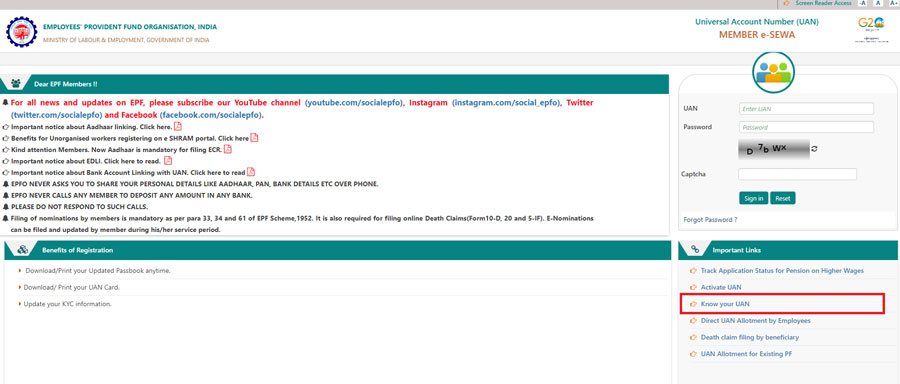
- Enter your registered mobile number and captcha for verification. Click ‘Request OTP’. Now, enter the OTP and captcha code and click ‘Validate OTP’.
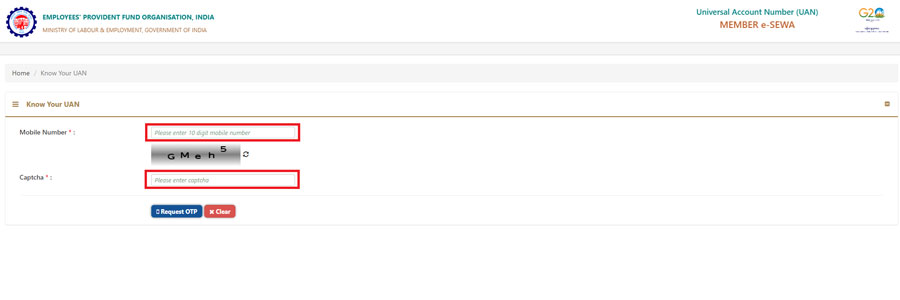
- Enter your name, DOB, PAN/Aadhaar/member ID, and captcha for verification. After entering all the details, click on the button ‘Show my UAN’.
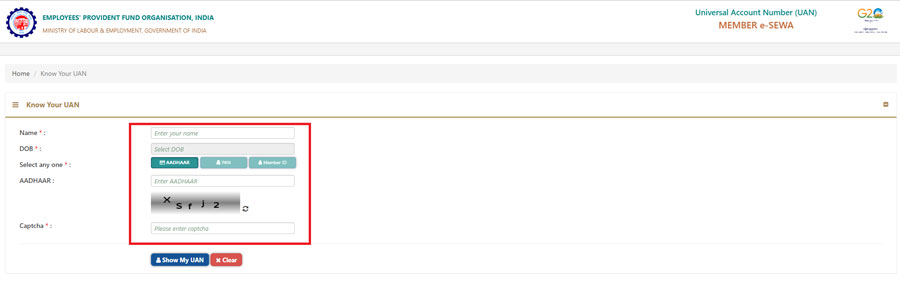
- Once verified, your UAN will be displayed on the screen.
Importance of UAN
- Multiple PF Accounts: The UAN helps link multiple EPF accounts if an employee switches jobs. Instead of generating a new PF account for each job, the UAN keeps track of all accounts.
- Ease of Transfer: With the UAN, transferring EPF balances from one employer to another has become seamless, ensuring continuity of benefits.
- Online Services: Employees can check their EPF balance, update personal details, and submit claims online through the UAN portal.
Types of Provident Fund
1. Employee Provident Fund (EPF)
- Applicable To: Salaried employees in organised sectors.
- Regulated By: EPFO
- Contributions: Both employee and employer contribute 12% of the basic salary + DA
- Withdrawal: Can be withdrawn at the time of retirement, resignation, or under certain conditions like medical emergencies, home loan repayment, etc.
2. Public Provident Fund (PPF)
- Applicable To: Any Indian citizen (self-employed, salaried, or non-salaried).
- Regulated By: Government of India.
- Contributions: The individual can deposit anywhere between Rs. 500 and Rs. 1.5 lakh per annum.
- Tenure: 15 years (extendable in blocks of 5 years).
- Tax Benefits: Contributions are eligible for tax deductions under Section 80C, and interest earned is tax-free.
3. General Provident Fund (GPF)
- Applicable To: Government employees.
- Regulated By: Central government.
- Contributions: Only government employees can contribute, typically 6% or more of their salary.
- Withdrawal: Can be withdrawn at the time of retirement or under specific conditions like medical needs, housing, education, etc.
4. Voluntary Provident Fund (VPF)
- Applicable To: Salaried employees who are already contributing to EPF.
- Regulated By: EPFO.
- Contributions: Employees can voluntarily contribute more than the mandatory 12% of basic salary and DA to their EPF account.
- Withdrawal: Same rules as EPF for withdrawal, but it allows higher accumulation of retirement corpus.
5. Recognised Provident Fund (RPF)
- A Recognised Provident Fund is one that is approved and recognized by the Commissioner of Income Tax under the Income Tax Act, 1961. Most organisations that are part of the EPF scheme have Recognised Provident Funds.
- Applicable to: Employees of organisations that maintain their own provident fund trust, which is approved by the Income Tax Department.
6. Unrecognised Provident Fund (URPF)
- An Unrecognised Provident Fund is one that is not approved by the Commissioner of Income Tax under the Income Tax Act, 1961. These funds are usually managed by employers who have not sought or obtained tax approval for their provident fund.
- Applicable to: Less common and usually applies to private organisations that maintain a provident fund without seeking recognition from the Income Tax DepartmentRead: Public Provident Fund Scheme (PPF) and difference between PF vs PPF.
Tax Implications on Provident Fund
Taxes on Provident Fund investments apply at three key stages:
- Contribution Stage – when you invest
- Accrual Stage – as interest accrues
- Withdrawal Stage – when you receive the maturity amount
Let’s look at the tax treatment at each stage.
Tax on Provident Fund contributions
- Employee’s Contribution: The employee’s contribution to the EPF (up to 12% of the basic salary + DA) qualifies for tax deduction under Section 80C of the Income Tax Act, 1961. The maximum deduction allowed under this section is Rs. 1.5 lakh per financial year.
- Employer’s Contribution: The employer’s contribution to EPF is tax-free for the employee up to 12% of the basic salary and DA. If the employer contributes more than 12%, the excess amount is added to the employee’s taxable salary. Also, if the total amount contributed by the employer to EPF, the National Pension Scheme, and superannuation fund is more than Rs 7.5 lakhs, the excess amount along with any interest or earnings on such amount will be taxed as perquisites in the hands of the employee.
Tax on Provident Fund interest
Interest on Employee and Employer Contributions:
- Interest earned in your EPF or SPF account is tax-free, but if the interest rate exceeds the notified rate (currently, 8.25%), the extra interest will become taxable.
- Also, since the Union Budget of 2021, if an employee’s EPF contributions exceed Rs. 2.5 lakh in a year, the interest earned on the excess amount will be taxed as “Income from Other Sources.”
- However, in the case of a voluntary provident fund, where there’s no employer contribution, this limit goes up to Rs. 5 lakh. The exact way to calculate this taxable interest is laid out in Rule 9D.
Tax on Provident Fund withdrawals
1. EPF withdrawals are tax-exempt under certain conditions:
- Withdrawal After 5 Years of Continuous Service:
- Recognised Provident Fund: Tax exempt
- Unrecognised Provident Fund:
– Employer’s share: Contribution and interest are taxed as salary.
– Employee’s share: Interest is taxed as other income.
- Premature Withdrawals:
Withdrawals are tax-exempt if the job ends due to:- ill health
- employer’s business closure
- reasons beyond the employee’s control.
2. In other cases, withdrawals before 5 years of continuous service are taxable. The entire withdrawal will be subject to tax in the year of withdrawal under the following heads:
- Employee’s Contribution: Not taxable as this was already part of your income and possibly claimed under Section 80C.
- Employer’s Contribution and Interest: Taxable under “Income from Salaries.”
- Interest on Employee’s Contribution: Taxable under “Income from Other Sources (IFOS)”
Note: The same tax rules as the EPF apply to VPF withdrawals. Withdrawals after 5 years of continuous service are tax-free.
Tax Deduction at Source (TDS) on EPF Withdrawals
- If the total PF withdrawal is more than Rs. 50,000, a 10% tax is deducted under Section 192A.
- If you don’t provide your PAN, the tax rate jumps to 42.744%.
- No tax is deducted when transferring your PF balance from one account to another.
- Form 15G/15H: If the employee’s total income for the financial year is below the taxable limit, they can submit Form 15G (for individuals below 60) or Form 15H (for individuals above 60) to avoid TDS.
| Situation | Recognised Provident Fund | Statutory Provident Fund | Unrecognised Provident Fund | Public Provident Fund |
| Employer’s Contribution | Exempt up to 12% (salary + DA)
Taxable if: – >12% – > ₹7.5L | Not taxable | – | – |
| Employee’s Contribution | Section 80C deduction | Section 80C deduction | No deduction | Section 80C deduction |
| Interest Earned | Exempt, except if:
– > notified rate – > ₹5L (if no employer contribution) – > ₹2.5L (if employer contributes) | Exempt, except if:
– > ₹5L (if no employer contribution) – > ₹2.5L (if employer contributes) | Not taxable on accrual | Exempt |
| Withdrawal After 5 Years | Exempt | Exempt | Taxable:
– Employer’s contribution – Interest on both employer + employee contributions | Exempt |
| Withdrawal Before 5 Years | Taxable (as if unrecognised) | Exempt | Taxable:
– Employer’s contribution – Interest on both contributions | – |
Frequently Asked Questions
What is a Provident Fund (PF)?
A Provident Fund is a savings scheme that requires both employers and employees to contribute a portion of the employee’s salary towards a retirement fund, which accumulates over time and provides financial support during retirement.
Why is Provident Fund important?
PF ensures financial security post-retirement by helping you save consistently during your working years and offering a safety net for emergencies.
What are the benefits of contributing to PF?
Apart from securing your retirement, PF offers tax benefits, earns interest, and can be partially withdrawn for specific needs like education or medical emergencies.
Who is eligible for PF?
Any salaried employee earning up to Rs. 15,000 per month is automatically eligible, but companies can also extend PF benefits to higher-salaried employees.
How can I check my PF balance?
You can check your PF balance online through the EPFO portal, the UMANG app, or by sending an SMS or using a missed call service. Check for the steps above.

